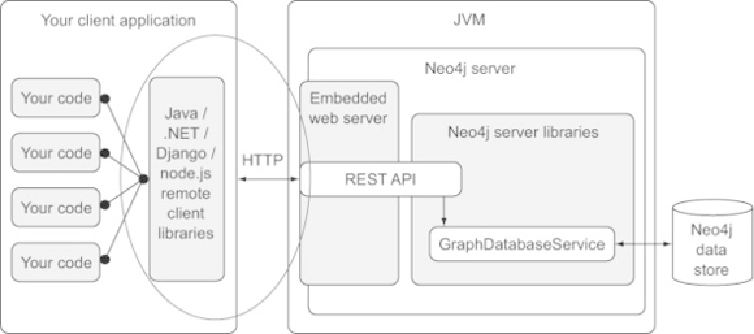Database Reference
In-Depth Information
x.name as name ,
collect(y.name) as friend_names
10.3.4. Using a remote client library to help access the Neo4j server
In
section 10.3.2
, you saw how the curl client can be used to operate with the fine-grained
low-level REST API. You also probably appreciate that this could prove to be quite te-
dious if you have to parse the JSON, construct appropriate URLs, and then follow them
around yourself. You additionally learned how to make use of the Cypher endpoint as an-
other means of accessing the Neo4j server. As with the fine-grained API, however, this re-
quired you to fully understand the low-level queries being executed, including parsing and
constructing JSON results.
You could choose to make use of one of the community-contributed Neo4j remote client
libraries to provide a more developer-friendly interface that does a lot of this plumbing for
you.
Figure 10.5
depicts what such a setup would look like. Many languages and frame-
work combinations are available—a listing of remote REST wrappers (as well as general
purpose wrappers) can be found at
http://www.neo4j.org/develop/drivers
. At the time of
writing,thislistincludesJava,.NET,Python,Django,PHP,JRuby,JavaScript,andClojure.
Figure 10.5. Server-based deployment approach using remote REST client libraries
These libraries and frameworks make integrating with the various aspects of the REST
API a far more pleasant experience than trying to deal with the raw API directly.
Listing

